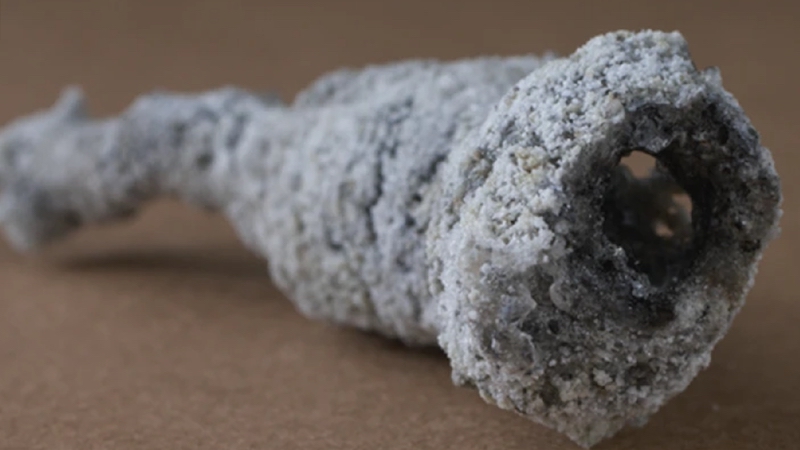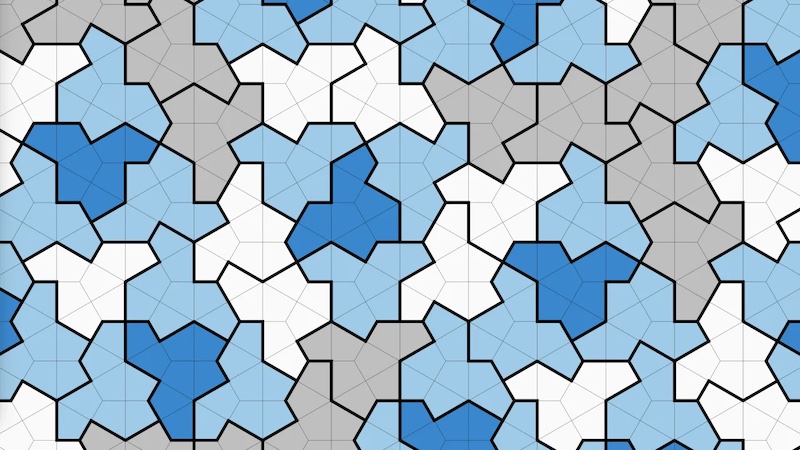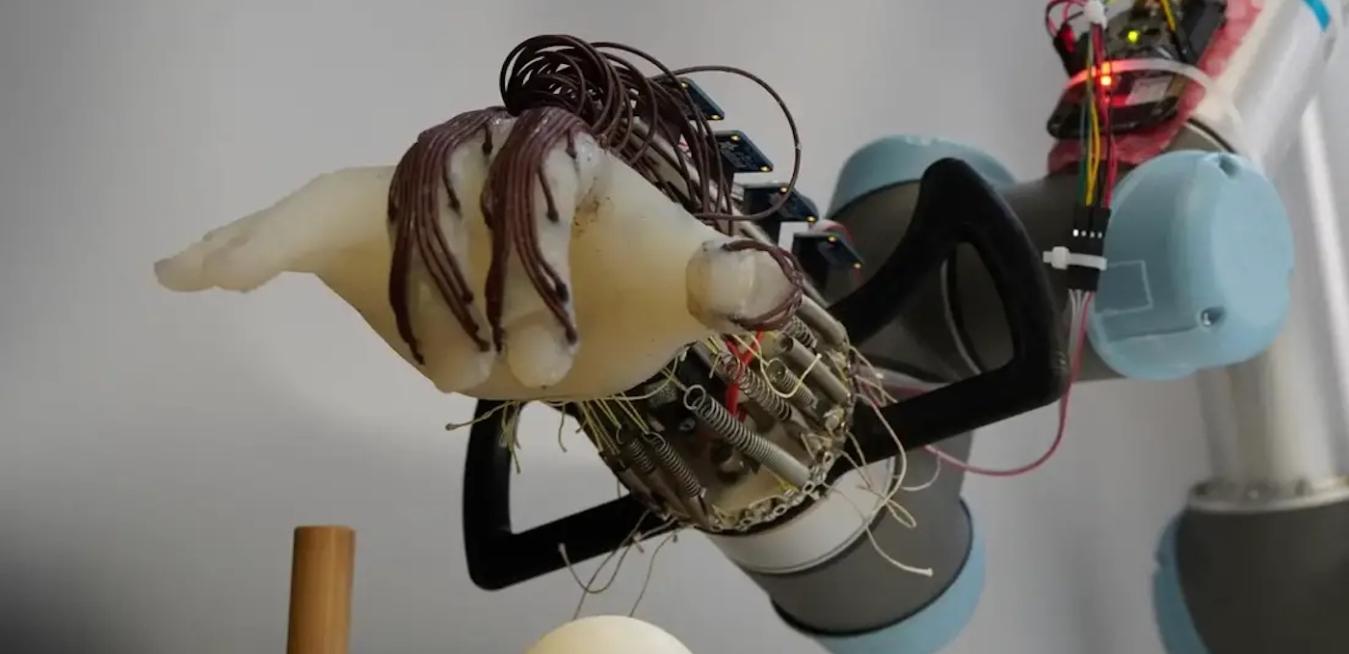Mammoth meat, paper airplanes, and one-of-a-kind shapes. This week’s coolest things embody brilliant simplicity.
Researchers have designed a low-cost, energy-efficient robotic hand that can grasp a range of objects — and not drop them — using just the movement of its wrist and the feeling in its “skin.” Video and top image credit: University of Cambridge
What is it? University of Cambridge researchers made a soft robotic hand that can gently grasp a range of objects.
Why does it matter? Creating a robot that can pick up objects with enough force to hold on to them without crushing or breaking them is an enduringly difficult task. This 3D-printed hand uses passive movement to grasp objects with minimal energy.
How does it work? The robot hand is soft and springy. Moving only from the wrist, it picks up an object — such as a ball, chopstick, or peach — by rolling over its surface until the object lodges between thumb and fingers. Touch sensors detect the strength of the grip. “We wanted to see whether a robot hand based on passive movement could not only grasp objects, but would be able to predict whether it was going to drop the objects or not, and adapt accordingly,” said Thomas George-Thuruthel, co-author of a study in Advanced Intelligent Systems.

What is it? Boeing engineers broke the Guinness World Record for farthest paper airplane flight.
Why does it matter? Because it’s fun, but also contributes data that can be used in designing prototypes. The team put in 500 hours to create their design, which sailed 289 feet and 9 inches — 3 inches shy of a football field — in a flight that lasted about 6 seconds. It broke the previous record, set a year earlier, by 3 feet.
How does it work? The engineers modeled their design after hypersonic aircraft, maximizing speed and minimizing drag to achieve the greatest distance in the least time. “Full-scale and paper airplanes have vast differences in their complexity, but both operate on the same fundamental principles,” said systems engineer Dillon Ruble. They established that the optimal angle for throwing was 40 degrees. Paper size of choice? A4.

What is it? Scientists in Florida believe they’ve found a material that’s never been seen before on Earth.
Why does it matter? “Minerals similar to it can be found in meteorites and space, but we’ve never seen this exact material anywhere,” said Mathew Pasek, a geoscientist at the University of South Florida. It could represent a new class of minerals, one that might trace back to the beginnings of life on Earth.
How does it work? The compound was found inside a chunk of fossilized lightning called a fulgurite, which formed when lightning hit a tree near Tampa. Pasek cracked open the less-than-3-inch piece of fused sand and discovered “colorful, crystal-like matter” inside. Analysis showed that it was a previously unknown material made mainly of calcium phosphate. The research was published in Nature Communications Earth and Environment.

What is it? An Australian cultivated-meat company made a meatball from preserved woolly mammoth DNA.
Why does it matter? The stunt demonstrates the potential of lab-grown meat as an environmentally friendly replacement for beef, chicken, and pork. (The jury is out on whether it will spark a taste for mammoth meat.) “We chose the woolly mammoth because it’s a symbol of diversity loss and a symbol of climate change,” said Tim Noakesmith, co-founder of Vow.
How does it work? Working with bioengineer Ernst Wolvetang at the University of Queensland, the company used the DNA sequence for mammoth myoglobin, a protein in muscle, and filled in gaps with elephant DNA. They inserted the strands into stem cells from sheep to create 20 billion cells that grew into mammoth muscle. “It was ridiculously easy and fast,” Wolvetang told The Guardian.

What is it? A retired printing technician from England discovered a 13-sided shape with a seemingly impossible property.
Why does it matter? The geometry problem has puzzled researchers for decades: Is it possible for a single shape to cover a surface without creating a repeating pattern? Picture a tiled bathroom floor. A small cluster inevitably repeats, however complex the design. In the 1970s, a Nobel Prize–winning physicist created a non-repeating tiling system with two shapes. It was thought that was the minimum number possible — until David Smith came up with what he’s calling “the hat.”
How does it work? The novel shape, which resembles a fedora, can completely cover a surface without any gaps, yet no cluster ever repeats itself. “It’s really a very simple polygon to describe. It doesn’t have weird, irrational angles, it’s basically just something you get by cutting up hexagons,” said Craig Kaplan, a computer scientist at the University of Waterloo in Canada who helped Smith prove his shape’s non-repeatability in a yet-to-be-peer-reviewed study.





